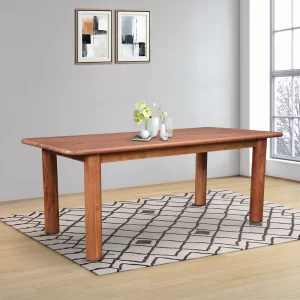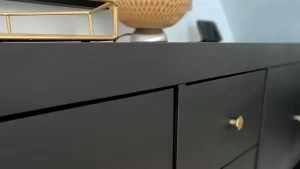Can You Paint Kitchen Cabinets?

Yes, painting kitchen cabinets is definitely possible with proper preparation. Start by carefully taking apart cabinet doors and hardware from their hinges and placing it all in zip-top bags marked for easy reaffixment later.
Before beginning painting, protect the floors and countertops with tarps or paper covers to shield them from paint splatters. Create a work station by setting up sawhorses with two long pieces of wood so as to raise cabinet doors and drawer fronts above ground level.
Preparation
An effective cabinet painting job starts with thorough preparation. This requires degreasing all surfaces with kitchen degreaser to ensure proper adhesion of paint and to rid cabinets of stains, mildew or other discolorations.
Begin by lightly sanding all surfaces to prepare them for priming, using either a foam sanding block or sponge to lightly scuff them down without getting down to bare wood. Vacuum any dust that results and rub down your cabinet using a tack cloth to get rid of any remaining grit.
Before painting, it’s advisable to remove doors and drawer fronts as this allows access to tight spots more easily, giving a superior finish. If you prefer leaving them in place, label each one so it can be installed correctly once your project is completed. Also consider taking this opportunity to store hinges and hardware separately in bags for easier organization when the time comes.
Paint
Cabinet painting’s final step involves applying paint to cabinets, doors and drawer fronts. For optimal results, work in a well-ventilated area like a garage or separate workspace and cover the floor with plastic before setting up work tables or sawhorses with plastic covering. Be sure to have all necessary equipment such as sanders, degreasers, brushes, rollers as well as buckets of paint ready.
Before beginning painting your cabinets, a high-quality primer is necessary. Stain-blocking primer dries quickly and helps seal knots, stains and other imperfections which might bleed through topcoats of paint. Sand the surface lightly prior to priming for optimal results, as multiple coats may be necessary for an even finish.
Once the primer is applied, sand lightly and wipe away all dust before moving on to the next coat. When painting starts, use a brush for tight spaces like corners and edges while rolling wider surfaces using your roller.
Brushes
If you prefer the traditional approach, brushes may be your next best bet for cabinet painting. A quality brush will leave a smooth finish but may take more time.
Start by choosing an appropriate work area: this should be well-ventilated with large doors open for air circulation if possible; alternatively you could paint in your garage or an unused room that offers adequate airflow. Lay a piece of sheet plastic on the floor, tape its edges securely around a work table/sawhorses for support, and set out all your tools before beginning work.
Apply primer to the cabinets using either a brush for tight areas and corners or roller for flat surfaces. A stain-blocking primer may be necessary to keep stained wood from bleeding through your top coat; otherwise, oil or water-based primer should do just fine. Allow this layer to fully dry before continuing with your project.
Finish
To give your kitchen cabinets an extra shine and resist scrapes and scuffing, add a coat of clear shellac or polyurethane. This will preserve their natural wood colors while protecting against staining, providing a durable surface to withstand cooking grease, steam and food splatters.
If you prefer stained wood surfaces, opt for an oil-based stain that seals it against moisture and pests while accentuating knots and graining that are particularly evident in certain species such as oak. Stains also help accentuate knots and graining that creates an antique, varied look ideal for rustic or farmhouse styles.
Before applying the first coat of paint, use a tack cloth to wipe off any remaining sanding dust from frames and doors, vacuum cabinets thoroughly, wipe down surfaces thoroughly to eliminate dust particles that might hinder smooth finishes on cabinet doors, then use either a brush or roller to apply an even coat of primer to all surfaces.



